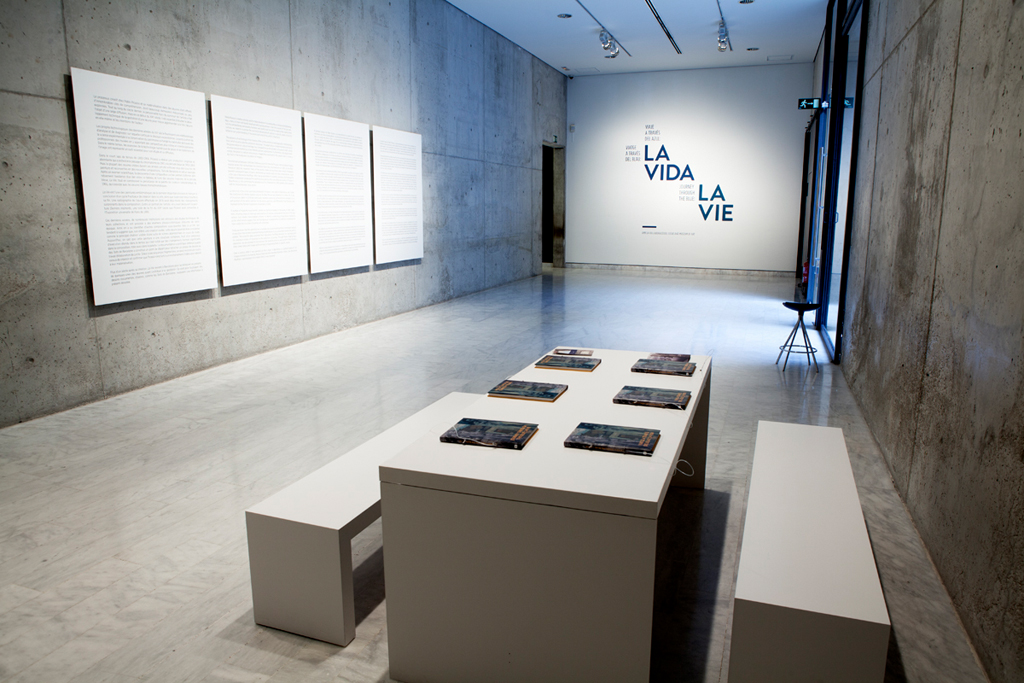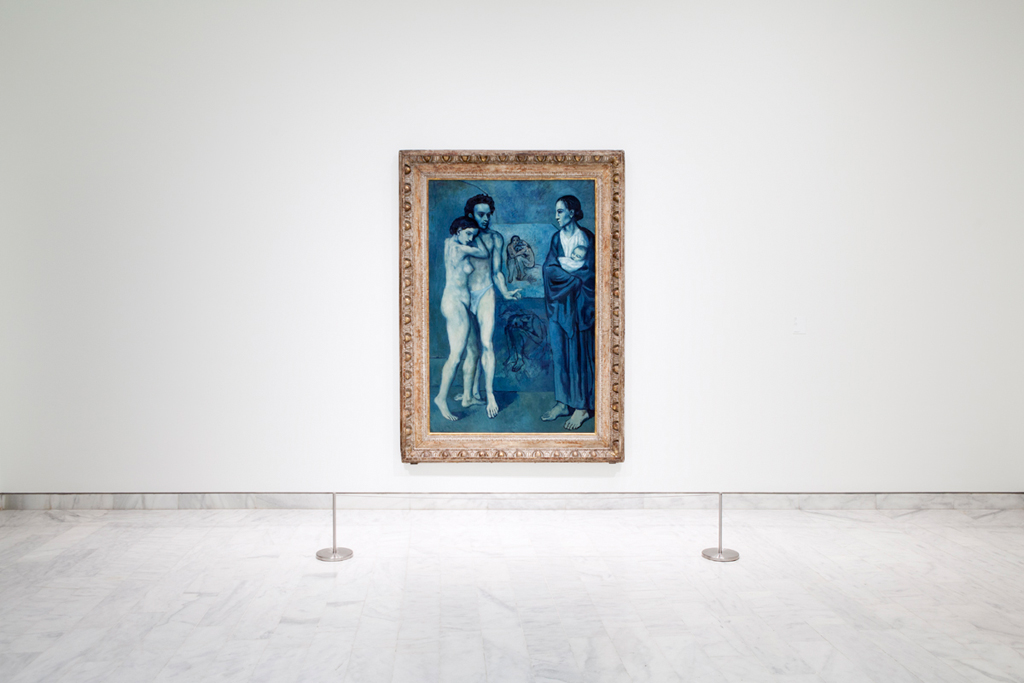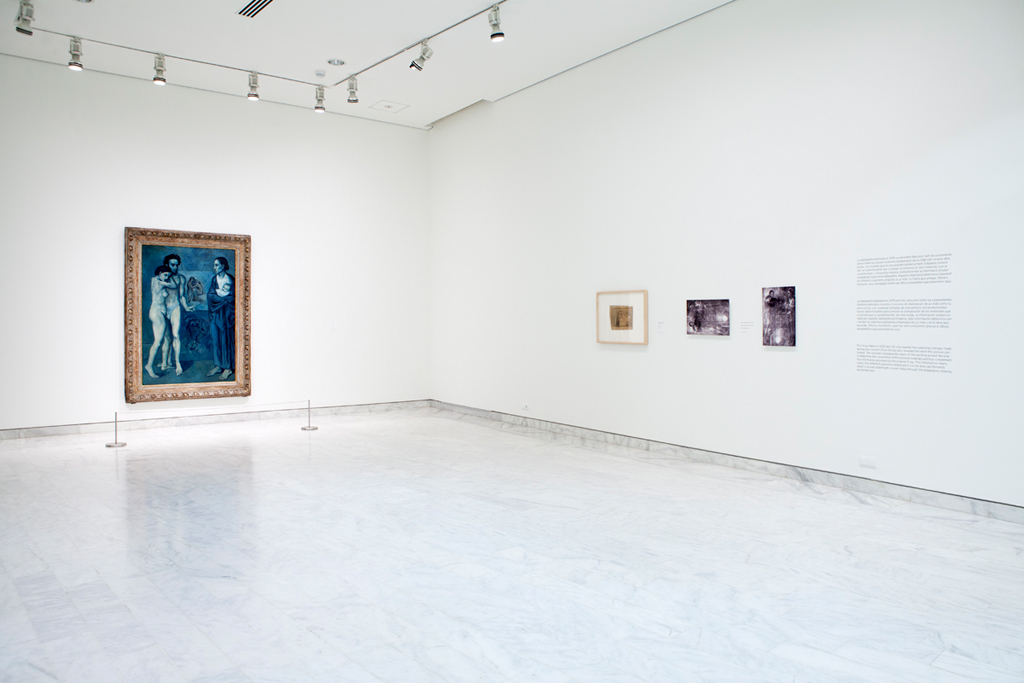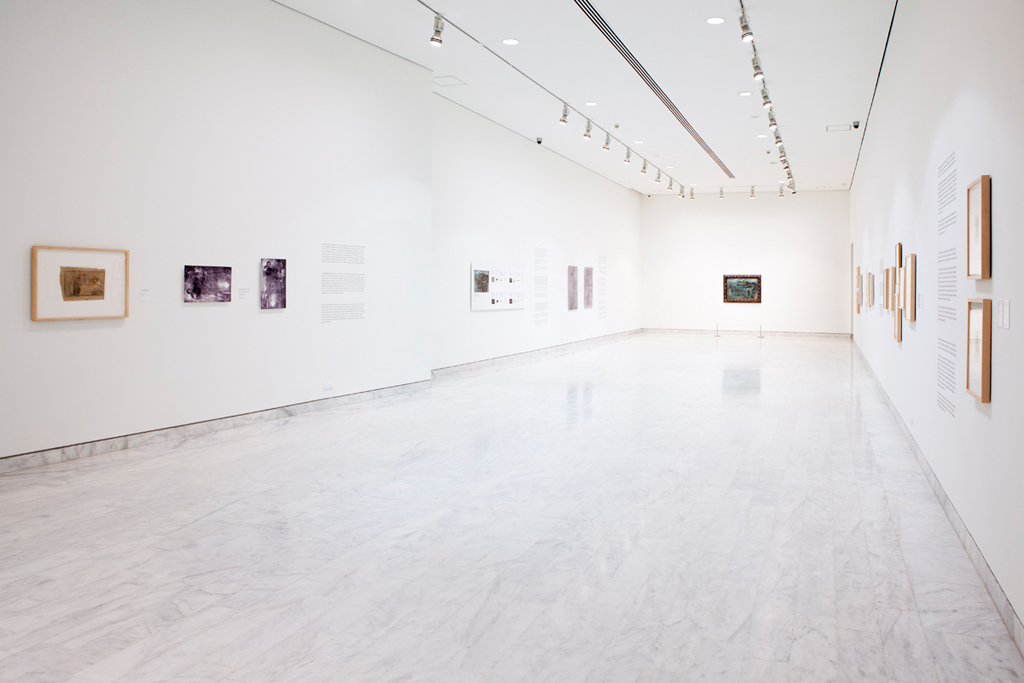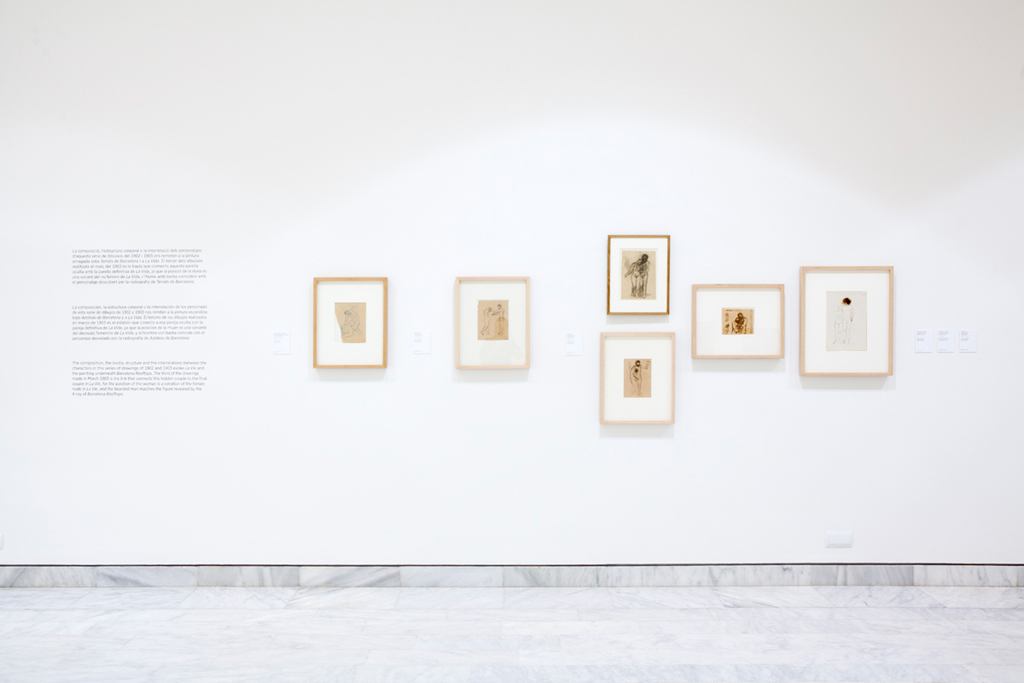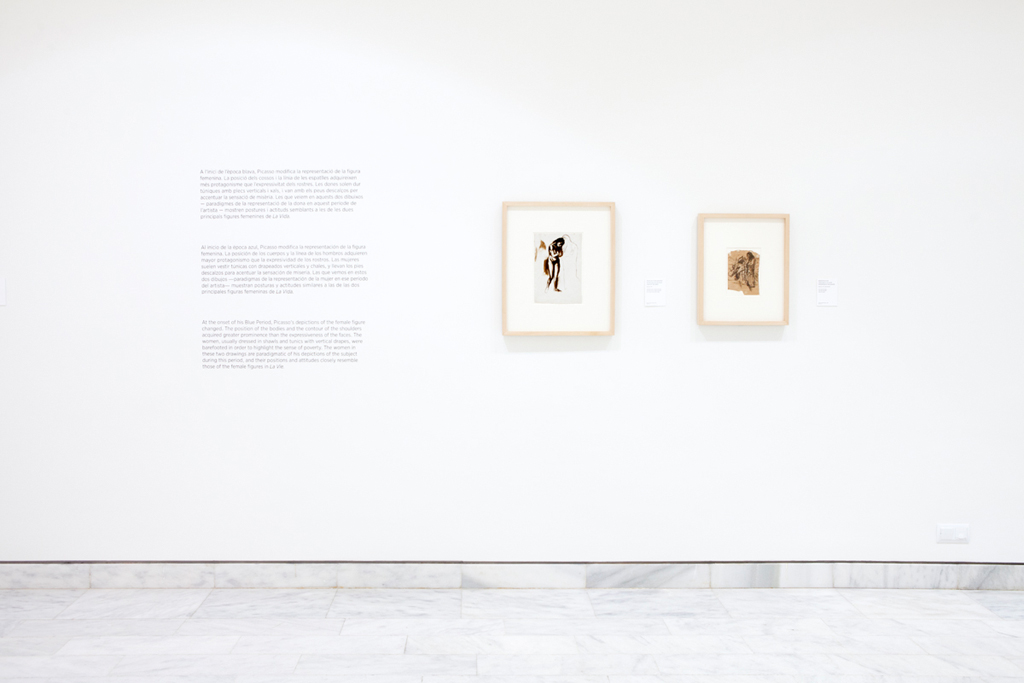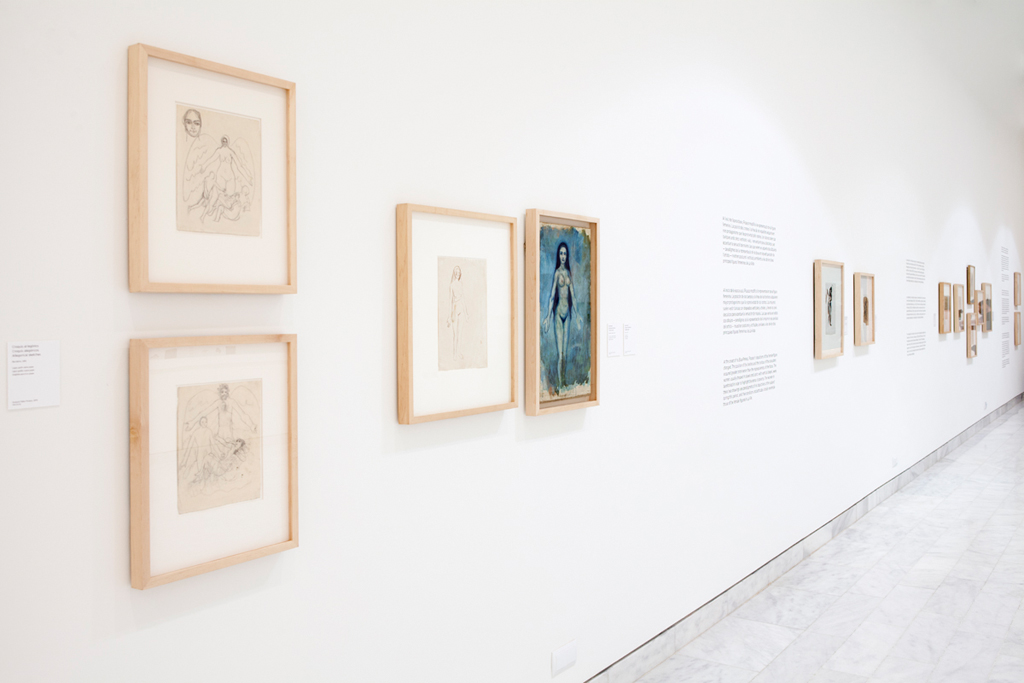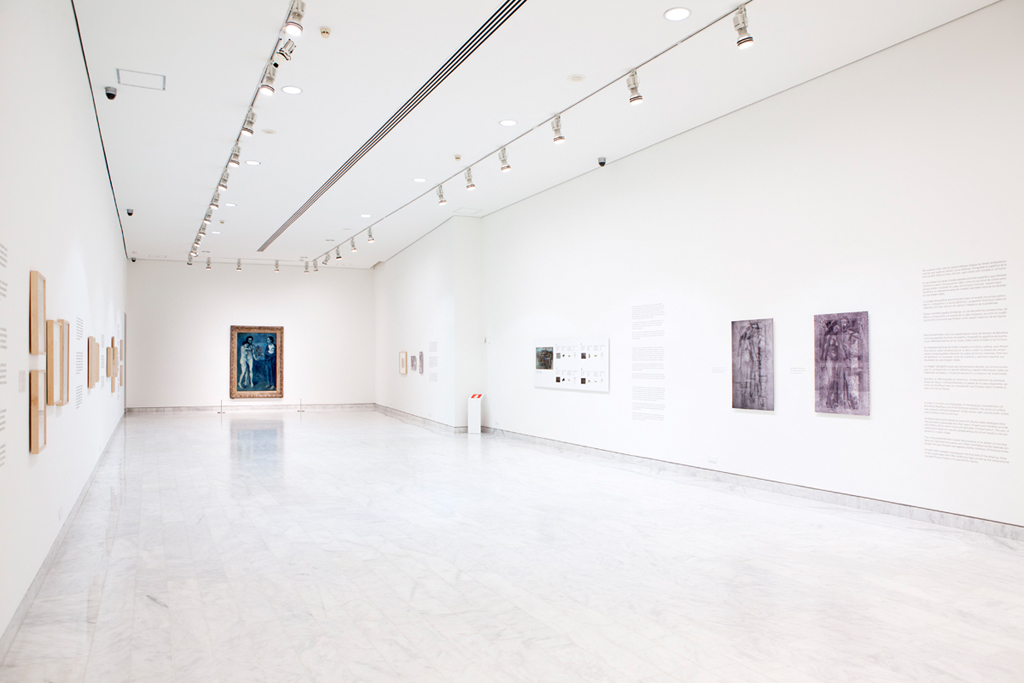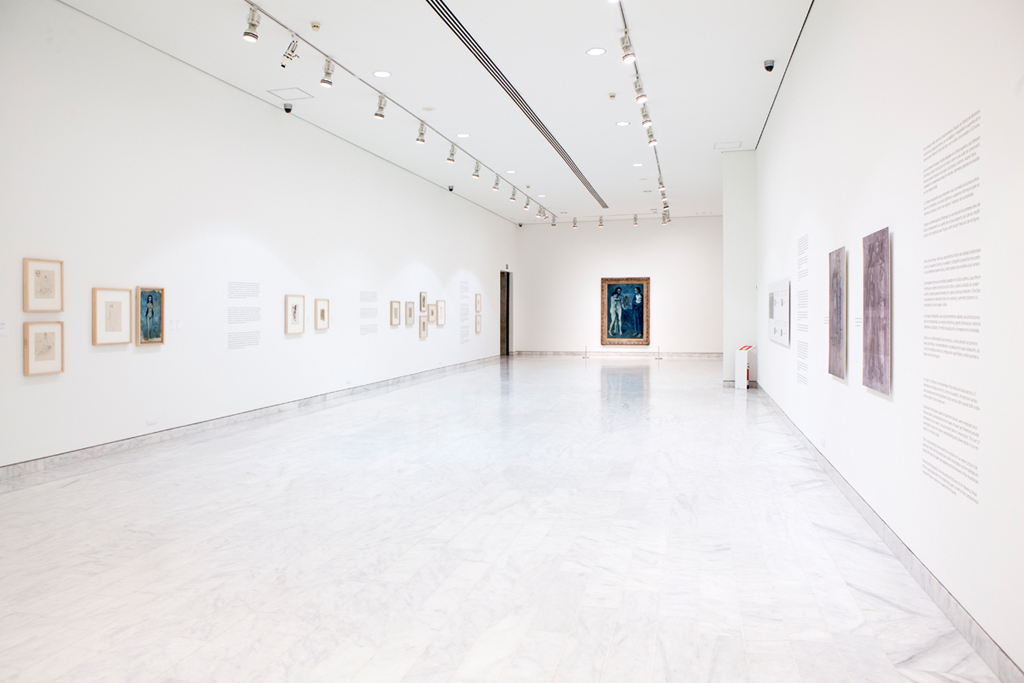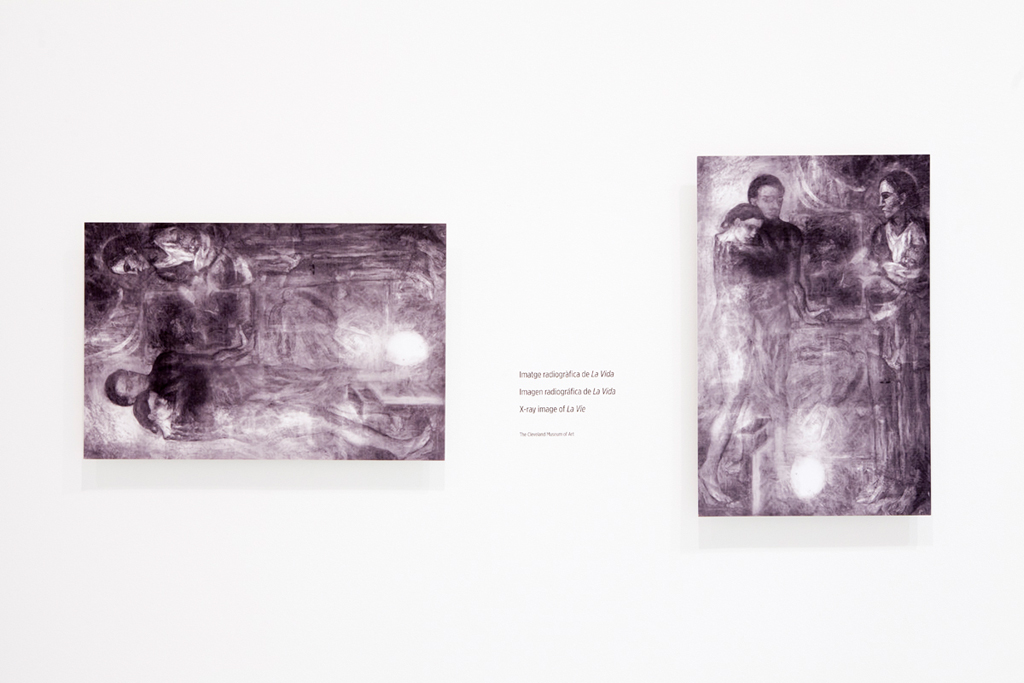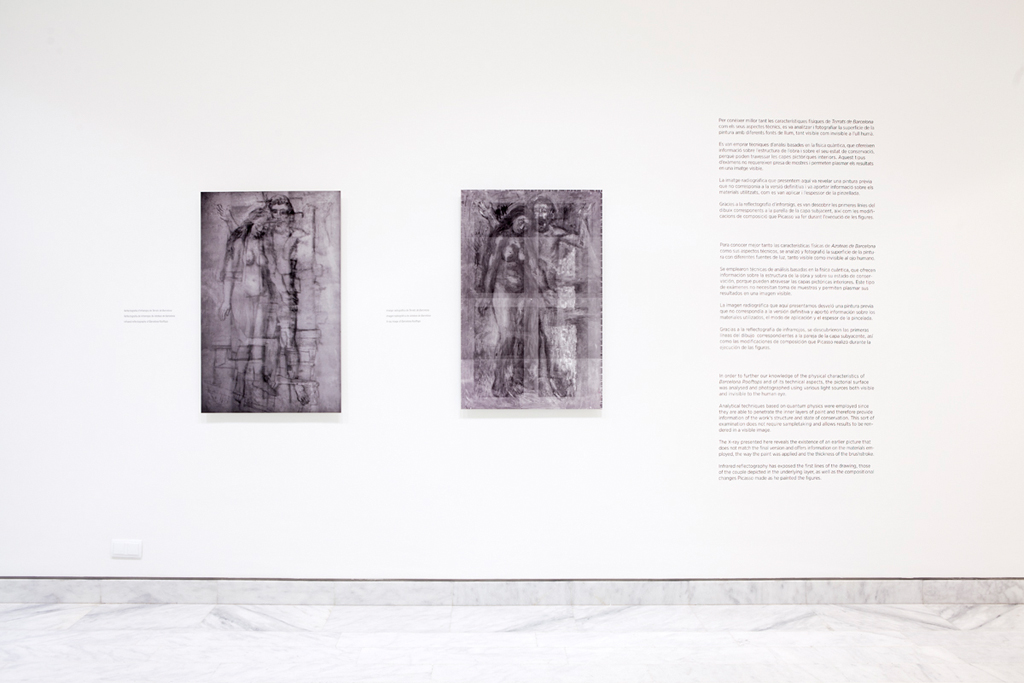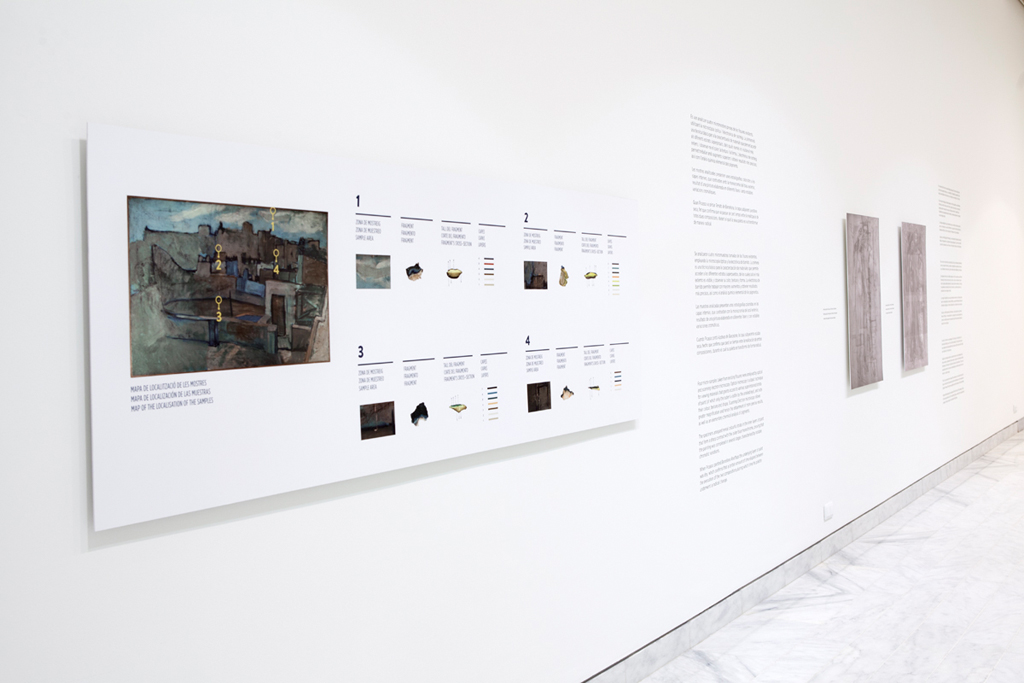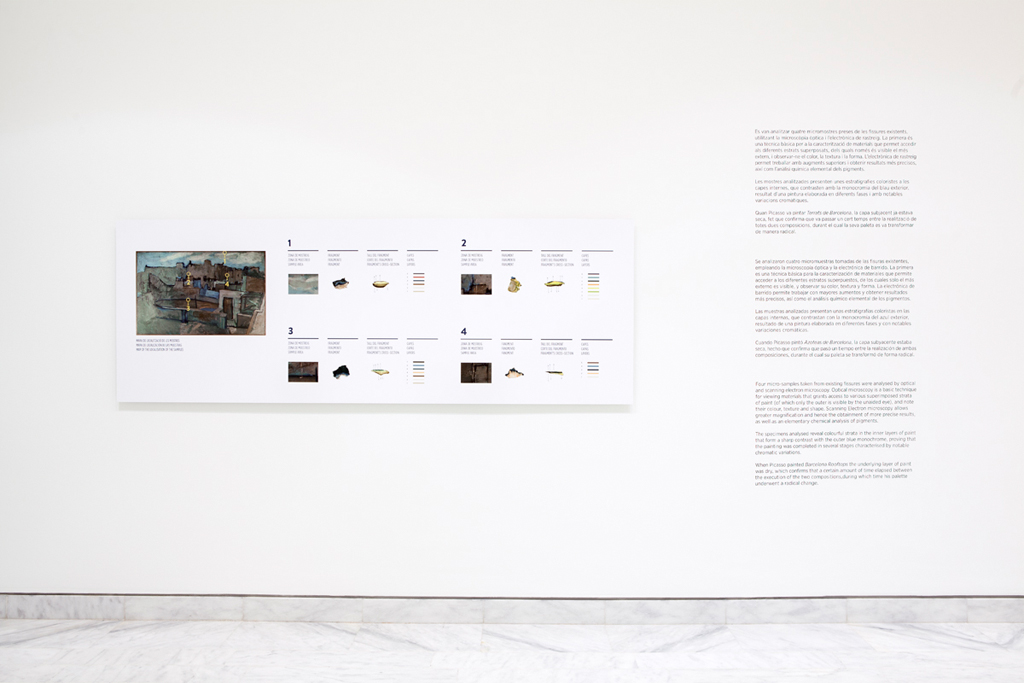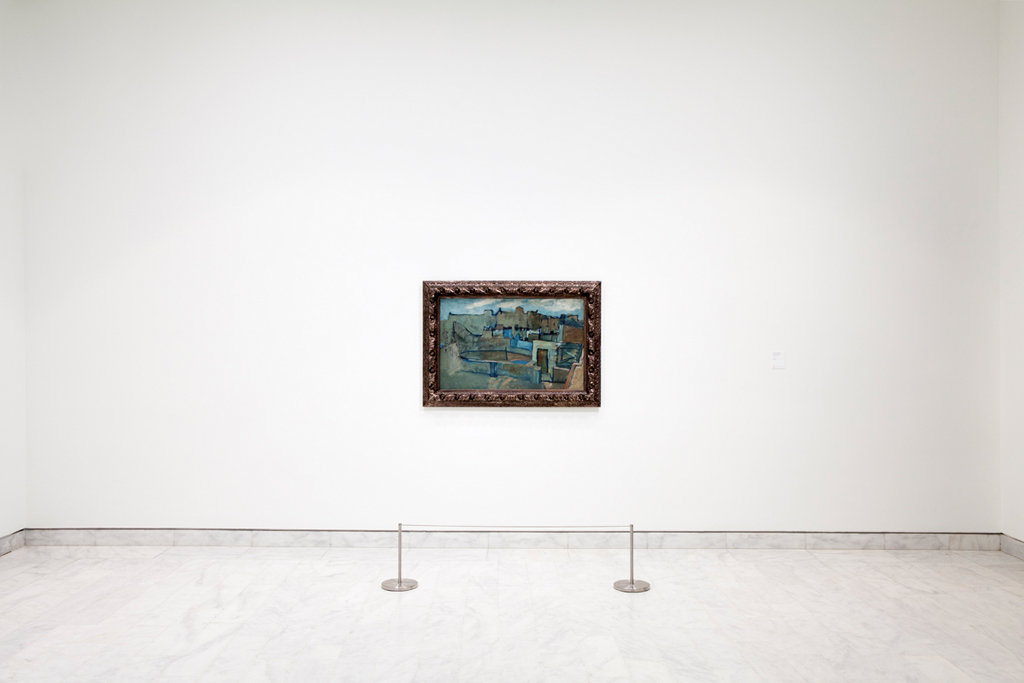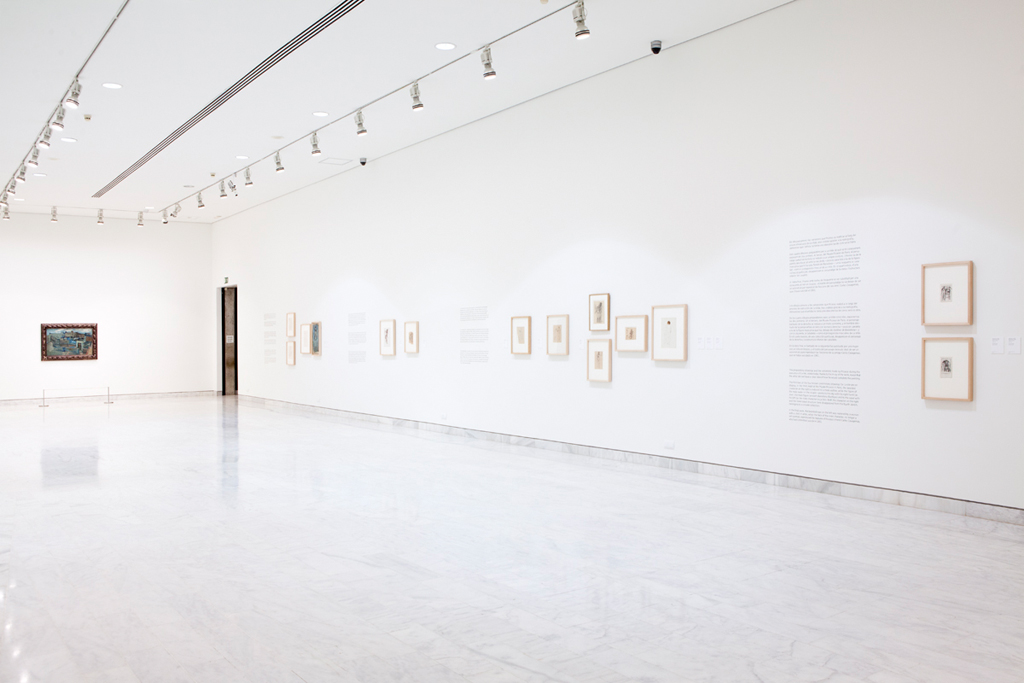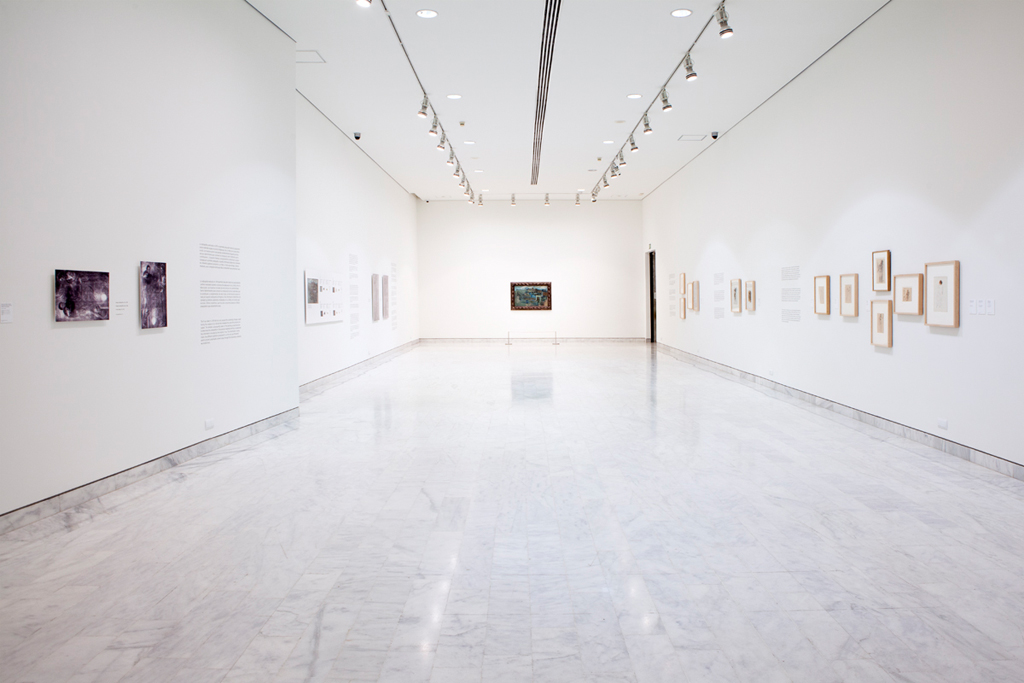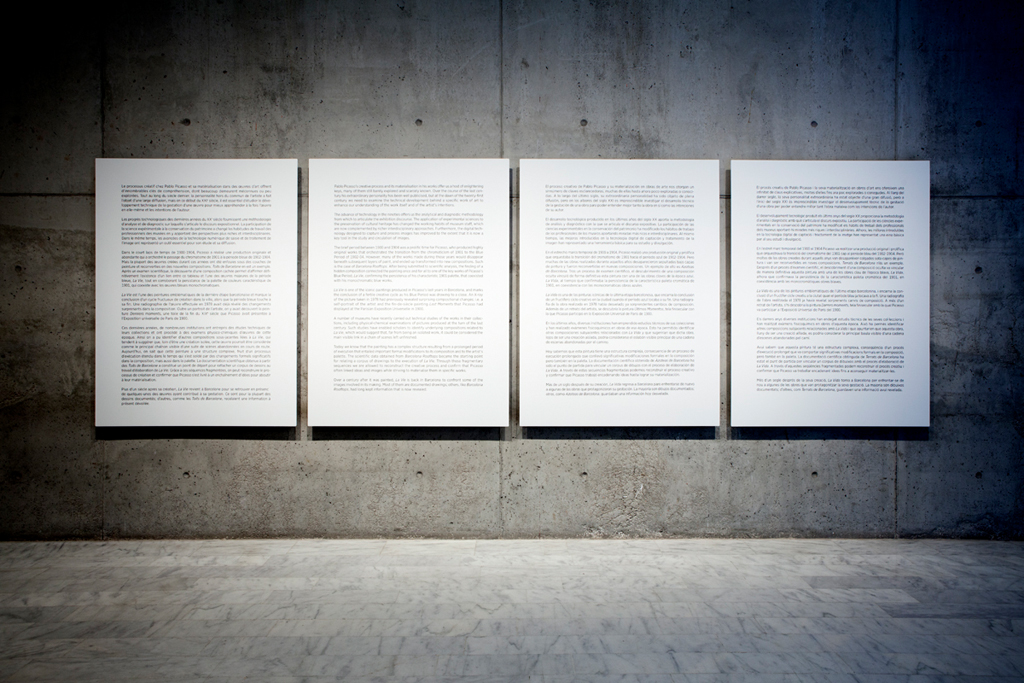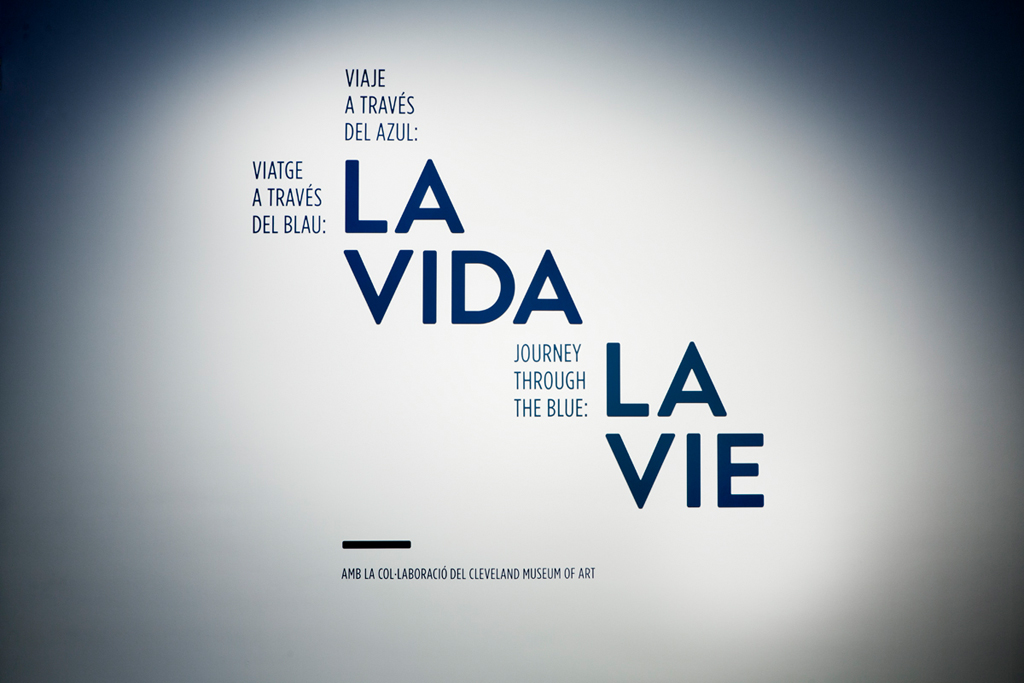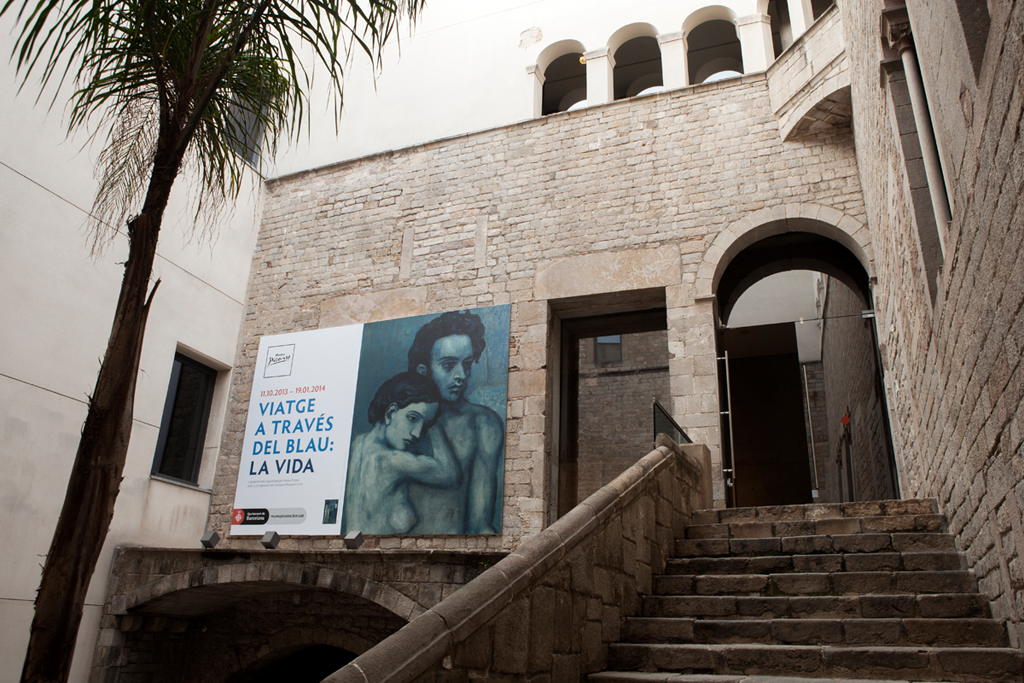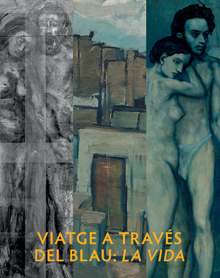
Journey Through the Blue: "La Vie"

Exhibition organised around La Vie, a capital work from Picasso's Blue Period painted in Barcelona in 1903. Connections are established between La Vie and certain drawings in the Museu Picasso's permanent collection, and with the picture hidden beneath the painting Barcelona Rooftops, discovered recently during an exhaustive study.
The results of an exhaustive study of Barcelona Rooftops (Barcelona, 1903) carried out by the Museu Picasso revealed the close ties between an underlying image in this painting that depicts a nude couple, and other drawings from the same period also in the permanent collection, highlighting the chromatic similarities with paintings made late in 1901. The couple portrayed in the underlying image would be a recurring motif in Picasso's production of the years 1902 and 1903, as highlighted by the wonderful composition La Vie painted in Barcelona in 1903 and currently one of the masterpieces in The Cleveland Museum of Art.
The objective of the exhibition is to establish and present the connections between La Vie, Picasso's drawings related to this work and the hidden image beneath Barcelona Rooftops. This technical proposition shows the material obtained during the study of the work carried out by the Department of Preventive Conservation and Restoration of the Museu Picasso.
La Vie returns to Barcelona
La Vie is the masterpiece of Picasso's Blue Period. Considered the most important picture produced before Les Demoiselles d'Avignon, La Vie reflects the evolution of Picasso's pictorial style, subject matter and philosophical concerns during this period. The enigmatic symbolism of the work has prompted numerous interpretations and studies, the most recent of which is the catalogue of the exhibition entitled Picasso and the Mysteries of Life: La Vie, curated by William Robinson at the Cleveland Museum of Art in 2012. The X-rays of the work taken in Cleveland in 1978 revealed that the support of the painting was the earlier work Last Moments, which had been displayed at Picasso's one-man show at Quatre Gats in February 1900 and had then been sent to Paris to be shown at the Exposition Universelle that same year. Although the painting isn't dated, we can say that it was made in the spring of 1903. An article published on 4 June of that same year in El Liberal announced the sale of the work to a French collector. Neither the identity of the collector nor the agreement have been verified, but the announcement helps us determine the date on which the picture was completed. The presumed purchase, however, contradicts the information provided by Robinson regarding the sale of La Vie to Sebastià Junyent. The exact time at which La Vie left Barcelona is not known. The work could have been acquired by art dealer Ambroise Vollard. After decades of mysterious silence, the work reappeared in 1926 illustrating the cover of The Arts under the title Figure Painting and quoting Thannhauser Galleries as its owner, who had purchased it from Vollard in 1924. In 1937 it was acquired by the Rhode Island School of Design Museum, and in 1944 it was sold to Seligmann Gallery in New York in 1944, which eventually offered it to the Cleveland Museum of Art, collection to which it still belongs presently.
Scientific study of Barcelona Rooftops
X-ray & infrared reflectography In order to further our knowledge of the physical characteristics of Barcelona Rooftops and of its technical aspects, the pictorial surface was analysed and photographed using various light sources both visible and invisible to the human eye. Analytical techniques based on quantum physics were employed since they are able to penetrate the inner layers of paint and therefore provide information of the work's structure and state of conservation. This sort of examination does not require sample taking and allows results to be rendered in a visible image. The X-ray presented here reveals the existence of an earlier picture that does not match the final version and offers information on the materials employed, the way the paint was applied and the thickness of the brushstroke. Infrared reflectography has exposed the first lines of the drawing, those of the couple depicted in the underlying layer, as well as the compositional changes Picasso made as he painted the figures. Colour stratigraphy Four micro-samples taken from existing fissures were analysed by optical, electron and scanning microscopy. Optical microscopy is a basic technique for viewing materials that grants access to various superimposed strata of paint (of which only the outer is visible by the unaided eye), and note their colour, texture and shape. Electron microscopy allows greater magnification and hence the obtainment of more precise results, as well as an elementary chemical analysis of pigments. The specimens analysed reveal colourful strata in the inner layers of paint that form a sharp contrast with the outer blue monochrome, proving that the painting was completed in several stages characterised by notable chromatic variations. When Picasso painted Barcelona Rooftops the underlying layer of paint was dry, which confirms that a certain amount of time elapsed between the execution of the two compositions, during which time his palette underwent a radical change.
Links to the museum's collection
Winged figures The position of the winged individual—male or female—in the drawings Allegorical Sketches is parallel to the two figures in the other works from that time, as well as that of the woman in the couple portrayed beneath Barcelona Rooftops, seen in the X-ray and the infrared reflectography. The first connection between these drawings and La Vie is established by a strange character—half man, half bird—and by the semi-reclining woman, both of whom appear below the squatting figure in the lower area of the painting in the Cleveland collection, visible in the X-ray displayed in the exhibition. Female figures At the onset of his Blue Period, Picasso's depictions of the female figure changed. The position of the bodies and the contour of the shoulders acquired greater prominence than the expressiveness of the faces. The women, usually dressed in shawls and tunics with vertical drapes, were portrayed barefooted which highlights the sense of poverty. The women in the drawings shown in the exhibition are paradigmatic of his depictions of the subject during this period, and their positions and attitudes closely resemble those of the female figures in La Vie. Couples The composition, the bodily structure and the interrelations between the characters in several drawings of 1902 and 1903 evoke La Vie and the painting underneath Barcelona Rooftops. One of them, made in March 1903, is the link that connects this hidden couple to the final couple in La Vie, for the position of the woman is a variation of the female nude in La Vie, and the bearded man matches the figure revealed by the X-ray of Barcelona Rooftops.

